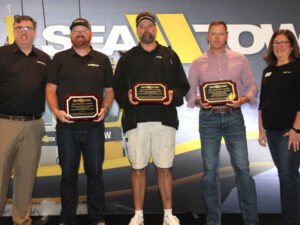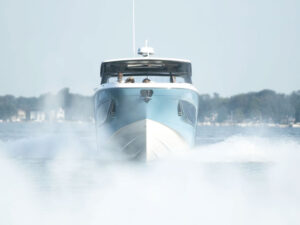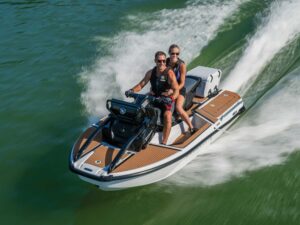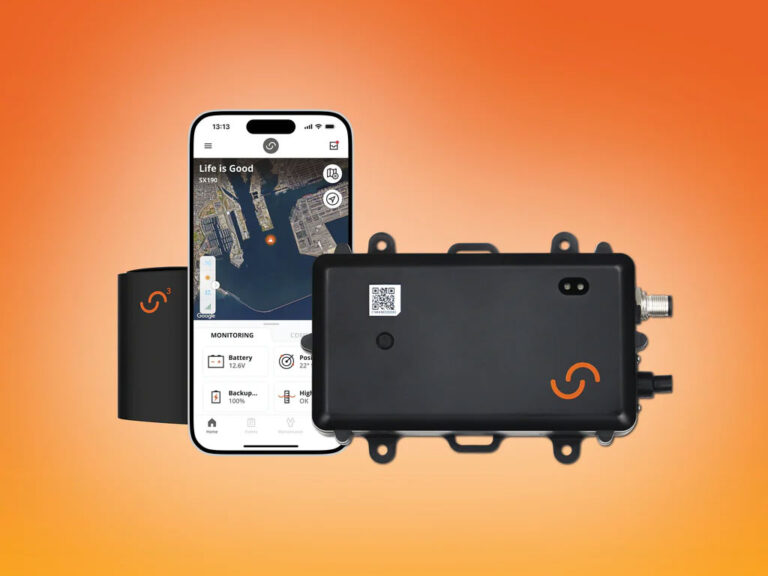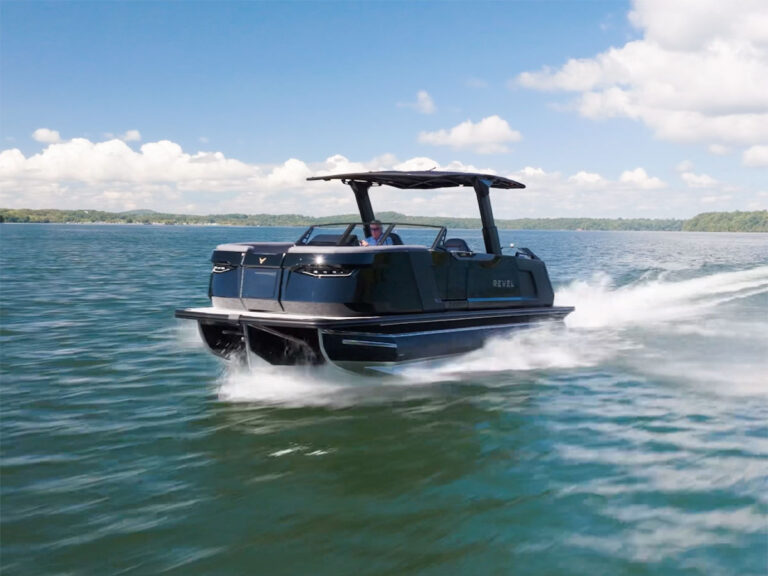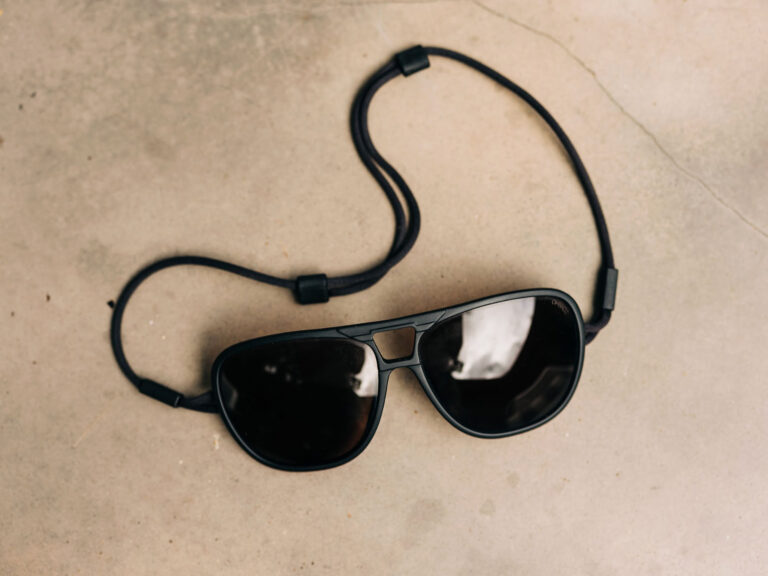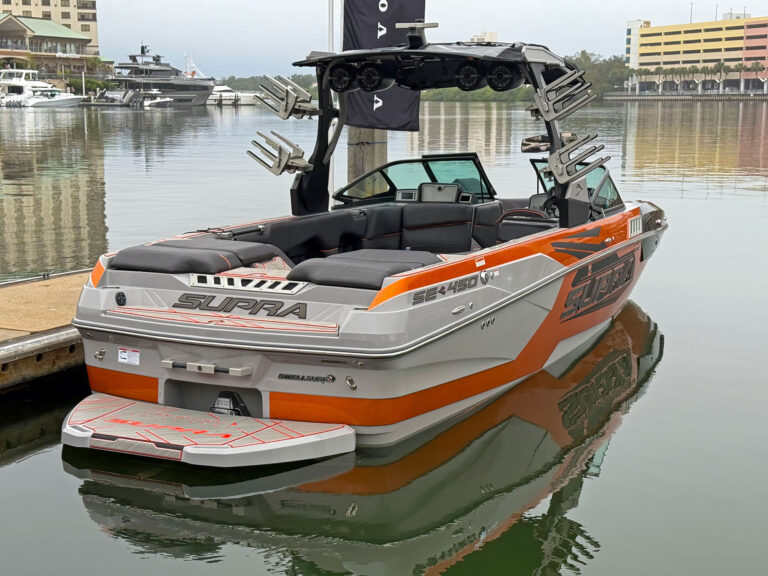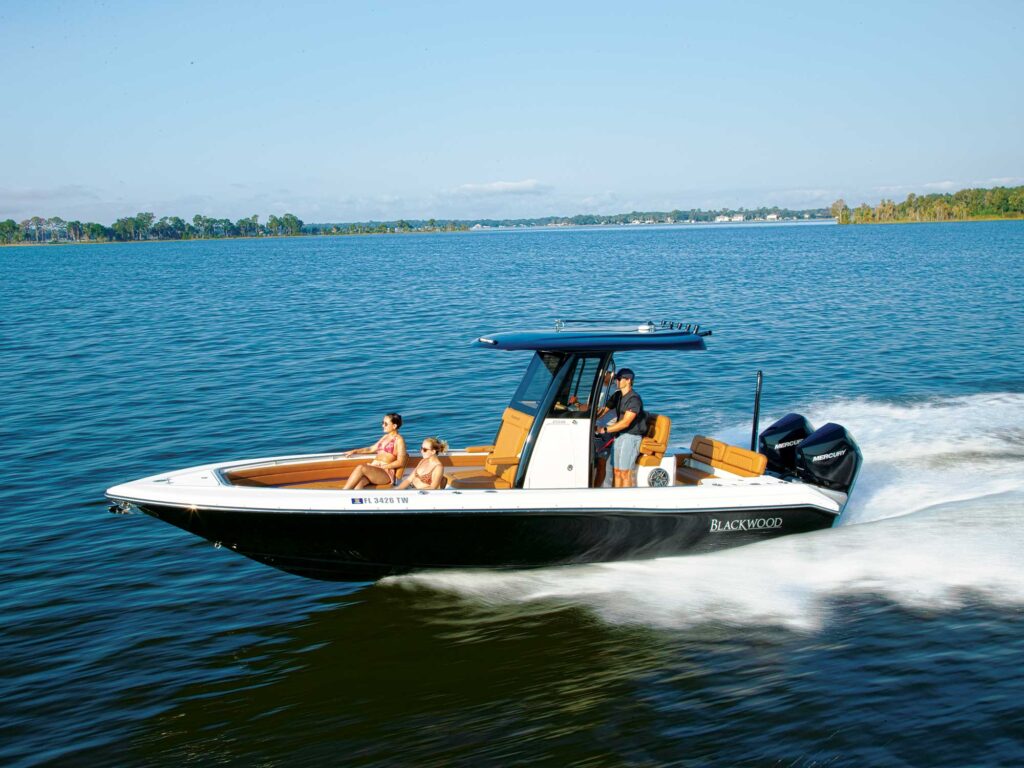
Trim tabs were once just a device fixed in place to lengthen a boat’s running surface and provide lift to its transom for a quicker, more level hole shot. When Bennett first introduced adjustable hydraulic tabs (installed in pairs on each side of the transom), skippers quickly learned how to use them to adjust the ride for choppy water, crosswinds, and beam seas or to lift 350-pound Bubba Wilson and his side of the vessel.
Interceptors (usuallly in pairs) began to appear on boats 20 years ago, but it wasn’t until recently that they entered the mainstream as wake-shaping tools in surf boats. It was advancements in micro-processing and actuator-response speeds that gave rise to this new approach to adjusting the ride.
Dynamic trim control systems employ inputs such as accelerometers, multi-axis sensors, GPS and sometimes gyros to measure a boat’s changing speed, attitude, and list, then compensate for sudden position changes by signaling trim actuators to rapidly deploy or retract to apply stabilizing forces against crosswinds, beam seas and particularly head and following seas. We have even found that some dynamic trim systems completely mitigate the hazardous instability that occurs when a boat is passing over parallel wakes.
Boaters are only beginning to realize how much better a favorite vessel rides when the forces of the wind and sea are dampened by these systems.
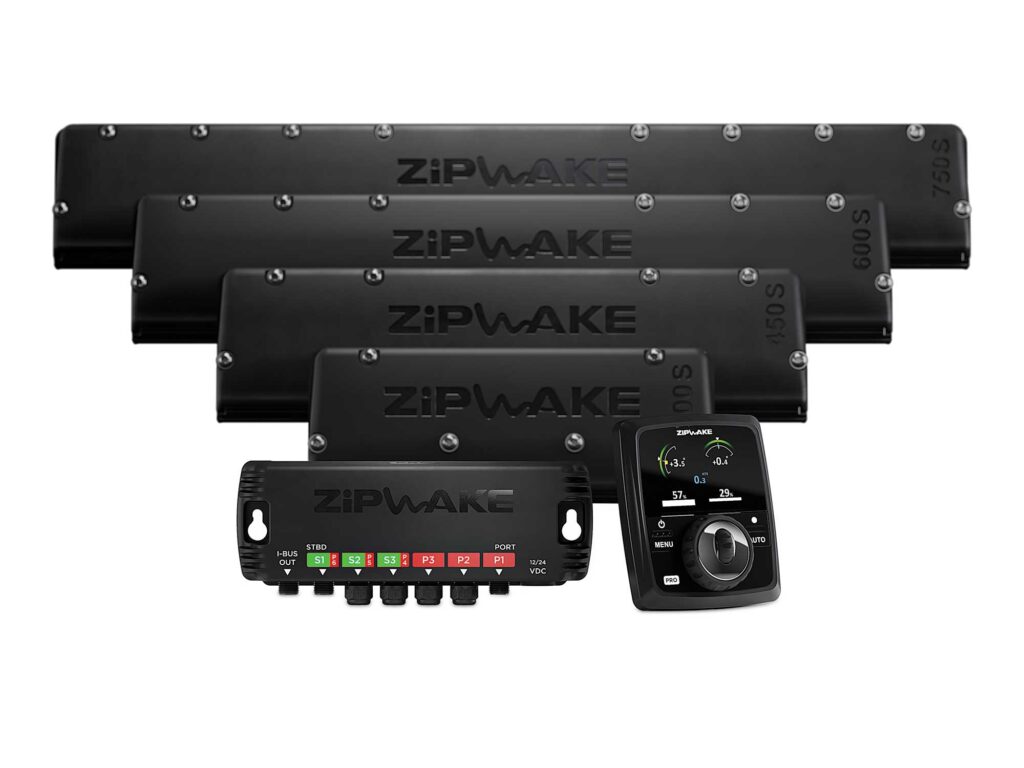
Zipwake Pro
- Price: From $4,050 to $15,840; zipwake.com
- Boat Size: Up to 100 feet
- In the Box: Control panel, integrator module, electrically actuated interceptors (two or more depending on vessel size).
What They Do: Bladelike interceptors mount flush to the outside of a square transom (with the actuating electronic motor inside) and deploy vertically downward, creating a pressure wave ahead of the interceptor blade that lifts the stern. Gyros are built into the color LCD control panel to measure attitude and inertia of the vessel, and analyze it to deploy and retract the interceptors independently to meet opposing environmental forces and adjust the vessel’s pitch and roll. This dampens pounding and corrects a list. In turns, it dampens heeling for a more comfortable ride. Interceptors can be controlled manually to adjust pitch and roll. Whether in manual or auto modes, the blades automatically retract at slower speeds and when the engine is turned off, saving them from damage from forklifting or trailering.
The Manufacturer Says: The new Pro system is five times as fast as the previous Zipwake system, designed primarily to adjust pitch and roll in more stable conditions. The Pro system’s quicker response improves the ride on vessels up to 100 feet in length, though boats of this size usually require more than one pair of interceptors.
We Tested: On a 28-foot runabout and a 43-foot catamaran, both vessels showed improvement in turns and decreases in bow rise. They also offered stabilizing assistance in difficult navigation conditions such as being overtaken by a parallel wake. All catamarans have a habit of heeling outward in turns, but with Zipwake Pro activated, the boat heeled comfortably, gently into the turn. The hole shot with these Zipwakes was a bit quicker, but more importantly, we experienced less bow rise to preserve most of our forward visibility on acceleration.
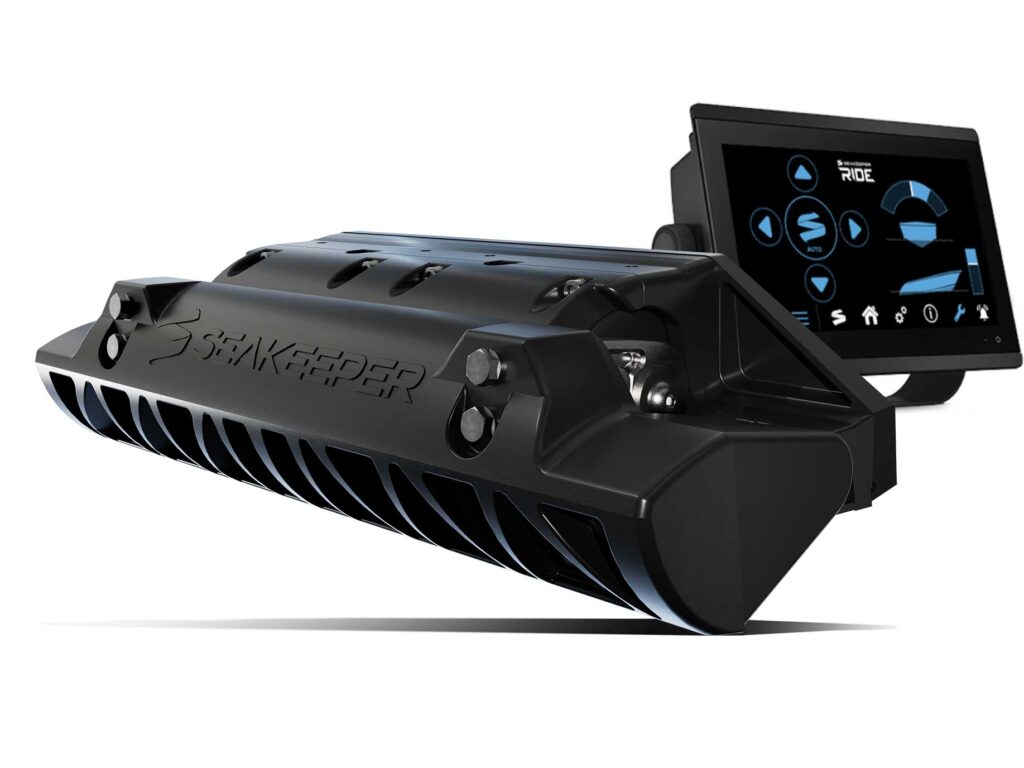
Seakeeper Ride
- Price: $4,500 to $30,175 (depending on hull size and style); ride.seakeeper.com
- Boat Size: Up to 55 feet
- In the Box: Electric actuators (two or more depending on boat size), keypad, motion-sensing software module, distribution panel for system actuation, shim plates for level installation.
What They Do: Ride uses sensors to measure pitch, yaw, roll and speed, and responds by cycling its blades up to 300 mm per second. With systems for boats ranging from 19 to 55 feet in length, the actuators are sealed and mounted on the outside of the transom, and the blades auto-retract at low speeds. The system interfaces with MFDs from Garmin, Simrad, Lowrance, Furuno and Raymarine, but a control keypad is available.
The Manufacturer says: Blades rotate at up to 300 mm per second to manage pitch and roll, and the manufacturer claims 70 percent improved stability over competitive products. However, it tested against the original Zipwake rather than the improved Zipwake Pro.
We Tested: On a Delta 245 CC, and aboard editor Jim Hendricks’ 22 center-console, we found they were instrumental in maintaining control and smoothing out rough seas. Hendricks perception is that the system adds 5 feet of length to his boat in the operational feel and control.

Lenco Pro Control
- Price: From $2,579.99 to $3,769.99; lencomarine.navico.com
- Boat Size: Up to 30 feet
- In the Box: A pair of electric actuators and tabs, control panel, position sensor and wiring harnesses.
What They Do: Plate-style trim tabs are normally in the same plane as the boat’s bottom surface until activated. Tilting the tabs downward puts upward pressure on them and creates a pressure wave that lifts the boat. A separate inertia measurement device updates the controller with rapidly changing conditions and directs the tabs up or down to counter them. This dampens pounding, rolling and in turns, it even dampens heeling inward, giving passengers a more comfortable ride. The tabs automatically retract at slower speeds and when the engine is turned off, saving them from damage from forklifting or trailering.
The Manufacturer Says: The system makes boats up to 74 percent more stable by reducing pitch and roll, according to Lenco.
We Tested: We ran a Blackwood 29 with the Lenco tabs and found the Pro Control system comparable to other systems, but with a slower response rate, though its ability to maintain a specified attitude is comparable. When running along parallel wakes, it kept the boat under control, avoiding side surfing and bow steering.
Read Next: Understanding the Basics of Boat Trim

Bennett Marine Bolt Electric Tabs Plus AutoTrimPro
- Price: From $1,300 (tabs and controller); bennetttrimtabs.com
- Boat Size: Up to 50 feet
- In the Box: Pair of stainless-steel trim plates, actuators, 20-foot harness with waterproof connectors. Sold separately are the AutoTrimPro controller, inertia measuring unit and wiring harness.
What They Do: Bennett Marine claims the throne for first to design tabs and we won’t argue the point. The company has been around and knows its stuff. Bennett’s AutoTrimPro is compatible with all of Bennett’s tabs, with kits for both electric and hydraulic tab systems. The Electric Bolt Tabs are available for boats up to 50 feet. Because Bennett offers controllers a la carte, owners may be able to convert their current tab system with the AutoTrimPro system. It includes a controller with a built-in inertial measurement model to give tabs directions for adjusting attitude and leveling the boat automatically. The auto module allows quick shifting from manual to auto operation and will remember two favorite trim settings to automatically correct for an expected list.
Manufacturer Says: Response time on the tabs can be adjusted and customized for different boat dimensions and weights.
We Tested: We have not actually tested the new AutoTrimPro tabs on any vessels yet and look forward to it. However, we have run many boats with Bennett tabs and owned one with tabs that operated flawlessly seven years later.

